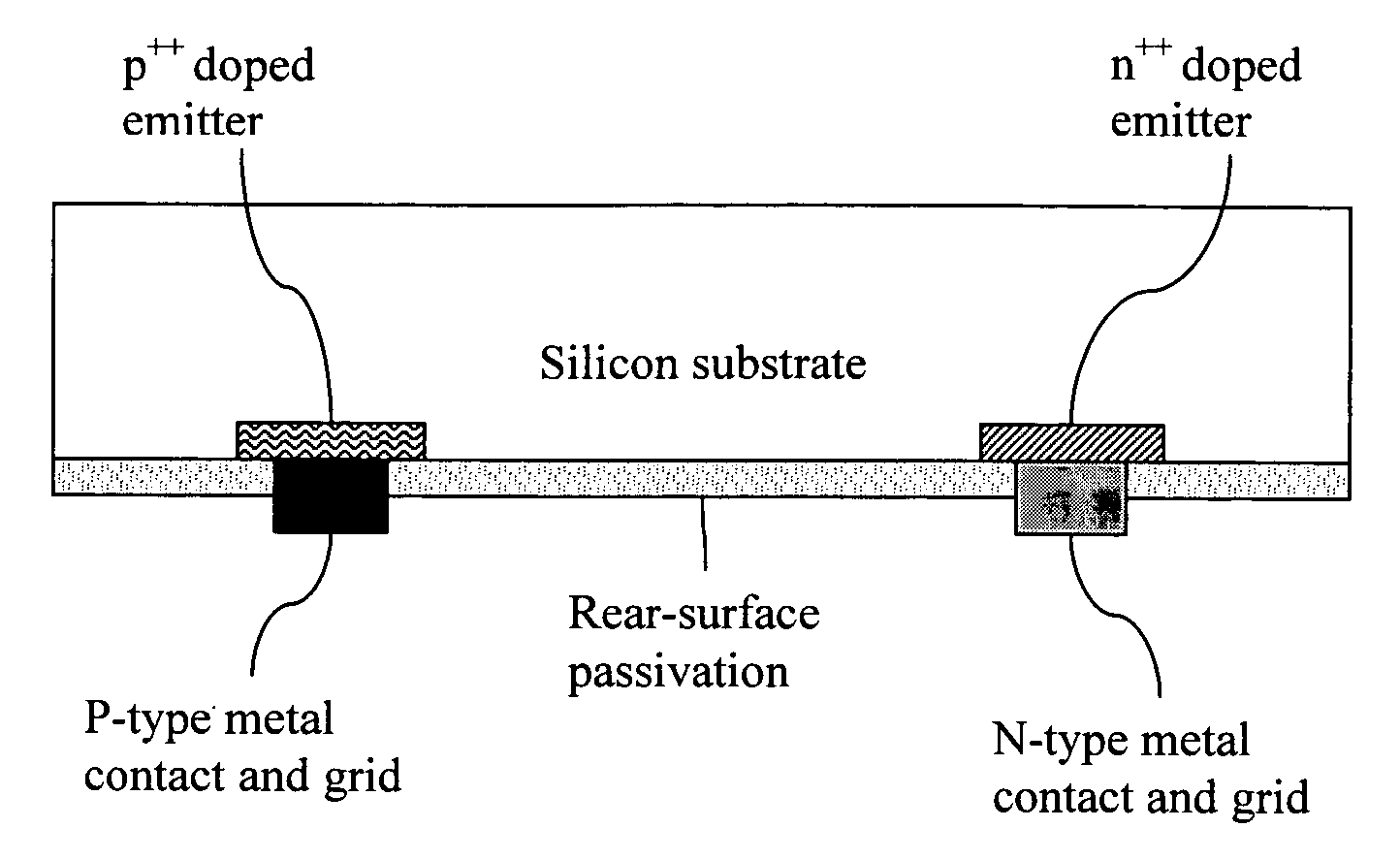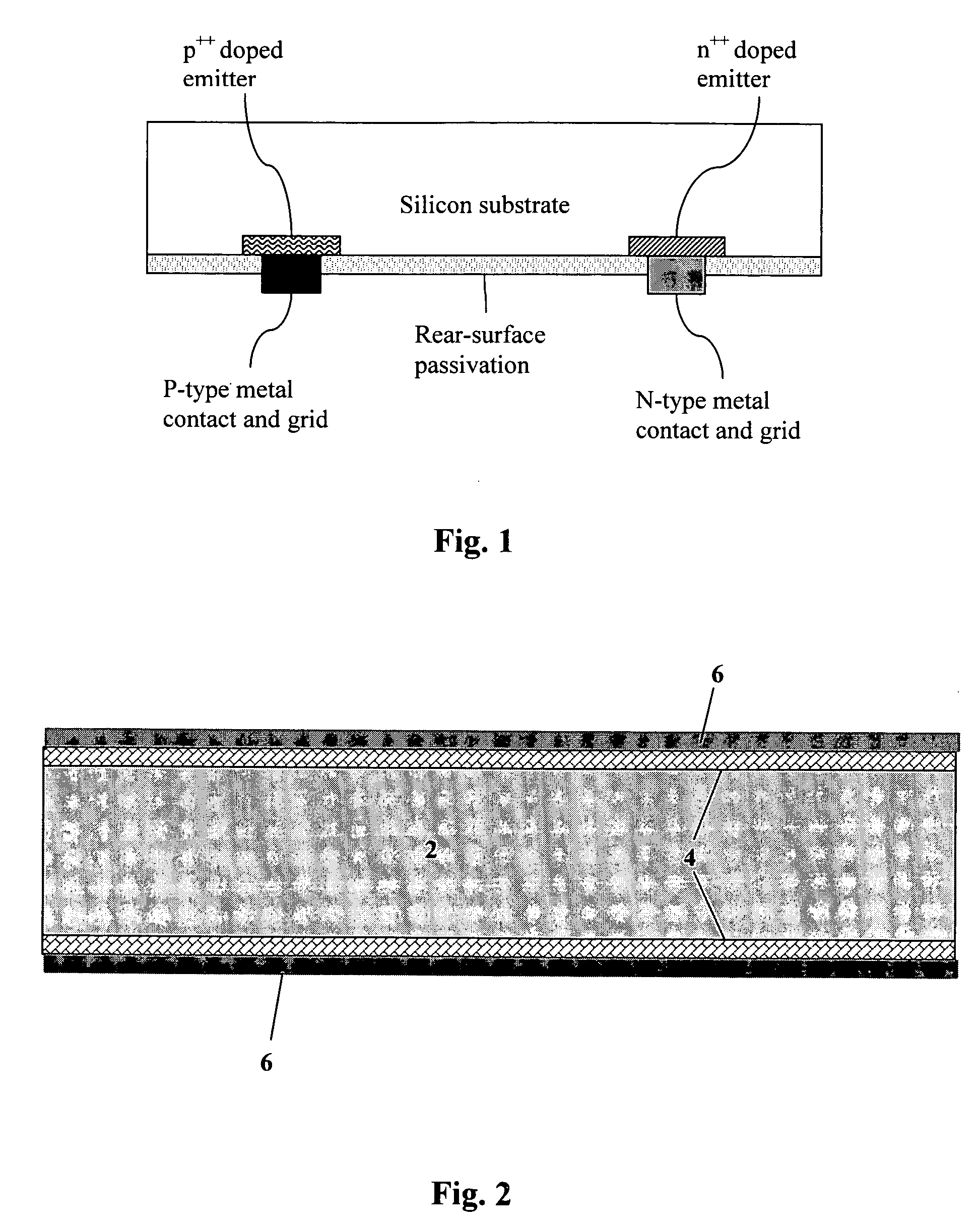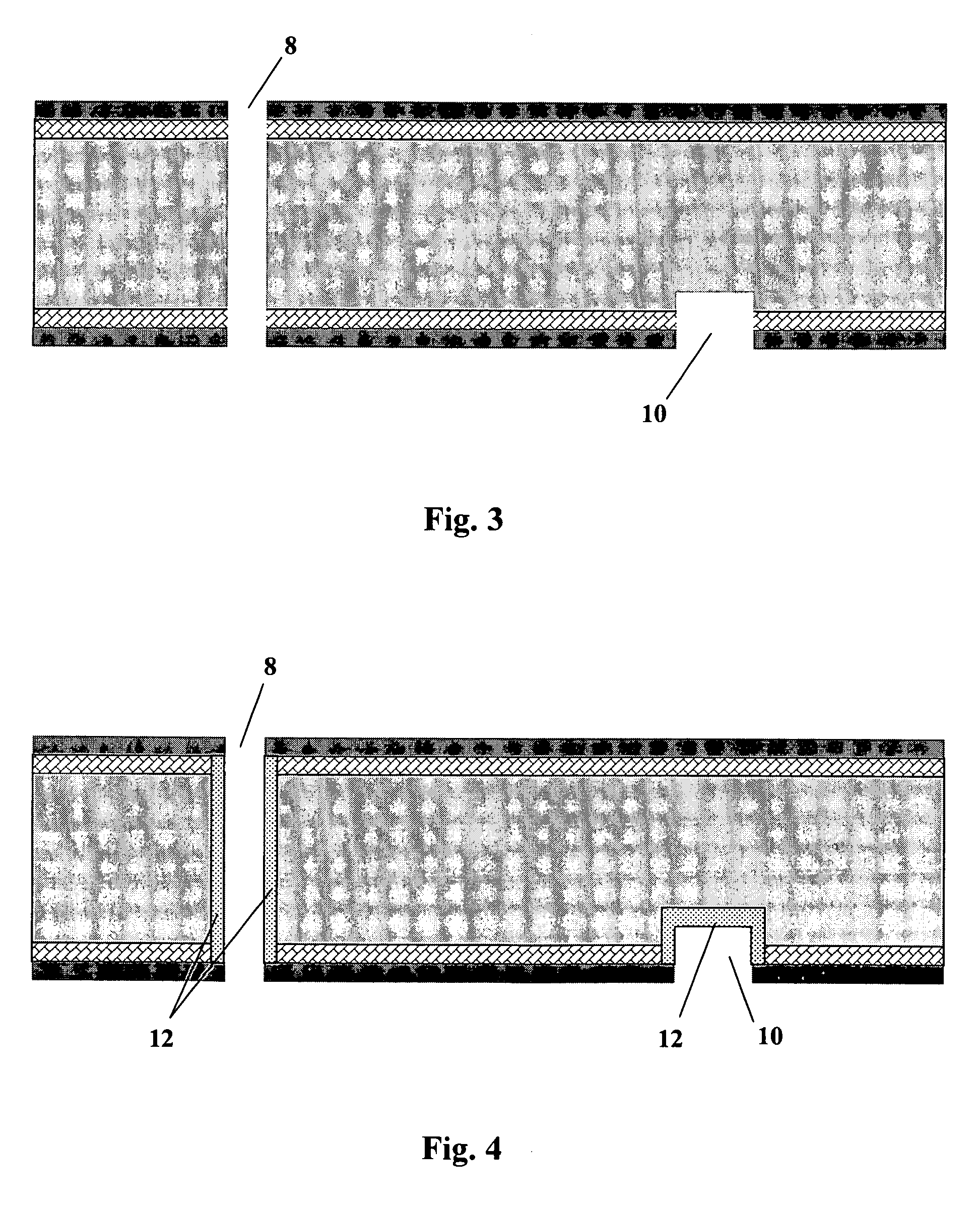Process and fabrication methods for emitter wrap through back contact solar cells
a solar cell and emitter wrap technology, applied in the field of methods and processes for fabricating backcontact silicon solar cells, solar cells, etc., can solve the problems of low-cost process sequence, significantly poor conductivity of alloyed-al grid cells, etc., and achieve low cost and high efficiency. , the effect of fewer process steps
- Summary
- Abstract
- Description
- Claims
- Application Information
AI Technical Summary
Benefits of technology
Problems solved by technology
Method used
Image
Examples
first embodiment
[0139] In a first embodiment, the grid lines are made with a tapered width—such that the width is increased along the direction of current flow until it reaches the edge of the cell. This reduces the series resistance at a constant grid coverage fraction because the cross-sectional area of the grid increases at the same rate that the current carried by the grid increases. A preferred embodiment of the tapered width pattern in both positive-polarity current-collection grid 510 and negative-polarity current-collection grid 520 is shown in FIG. 22 (not to scale). FIG. 23 shows a cross-sectional view of the IBC grids of FIG. 22 on the back surface of solar cell 505 with plated metallization; that is, metal 530 plated over the contact metallizations.
[0140] In general, the degree of tapering may be determined either empirically or by calculation, to determine an optimal tapering. Additionally, the metal coverage fraction and the spacing between same-polarity grids may similarly be varied....
second embodiment
[0141] In a second embodiment, the grid resistance can be reduced by making the grid lines thicker. The thickness of screen-printed Ag paste grids is limited by the physical properties of the paste and screen. The preferred geometry for the IBC grid permitting edge collection (FIG. 19A) typically requires relatively thick grid lines (>50 μm) in order to be able to conduct current over the large dimensions with acceptable resistance losses. This is thicker than can be easily screen printed. Two preferred methods of increasing the grid line thickness of the printed Ag IBC grid are: by dipping the IBC cell into molten solder (“tin dipping”) or by plating (electro- or electroless) of metal onto the grid lines. Tin dipping is a well known process that is used by some silicon solar cell manufacturers for fabrication of conventional silicon solar cells. The temperature of the molten solder depends upon the composition of the solder, but is generally less than 250° C. In one embodiment a Sn...
PUM
 Login to View More
Login to View More Abstract
Description
Claims
Application Information
 Login to View More
Login to View More - R&D
- Intellectual Property
- Life Sciences
- Materials
- Tech Scout
- Unparalleled Data Quality
- Higher Quality Content
- 60% Fewer Hallucinations
Browse by: Latest US Patents, China's latest patents, Technical Efficacy Thesaurus, Application Domain, Technology Topic, Popular Technical Reports.
© 2025 PatSnap. All rights reserved.Legal|Privacy policy|Modern Slavery Act Transparency Statement|Sitemap|About US| Contact US: help@patsnap.com



